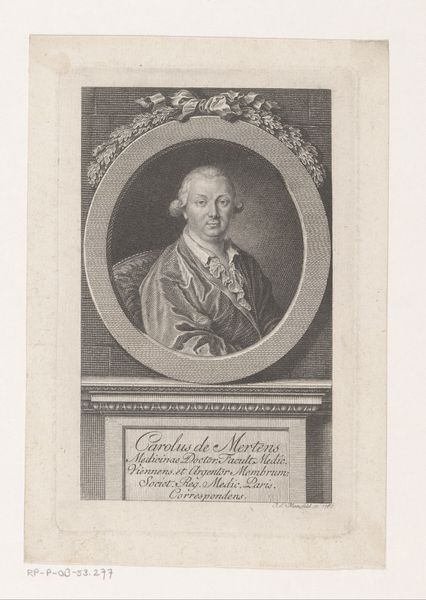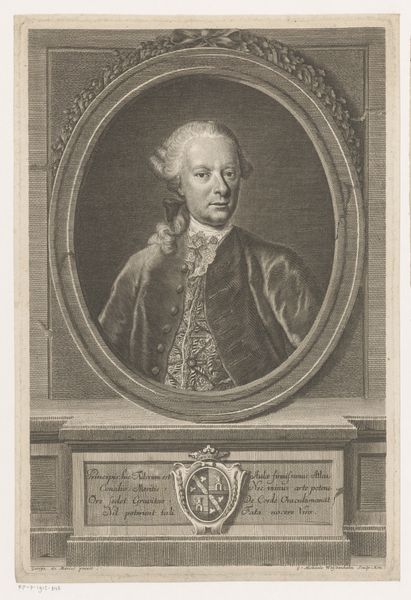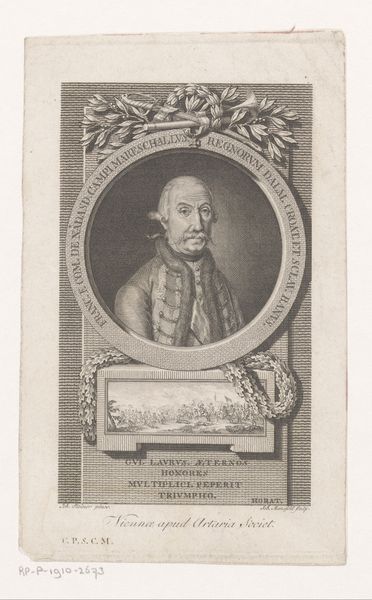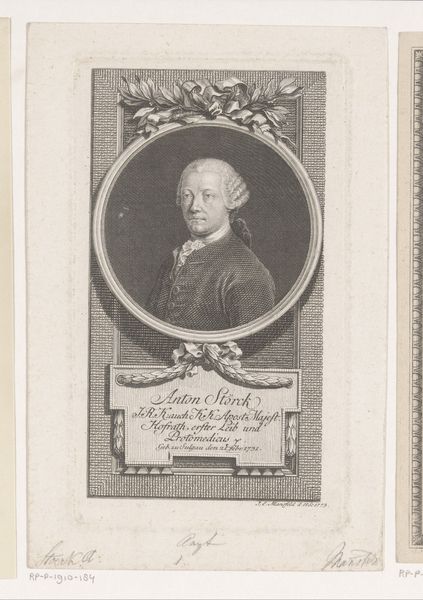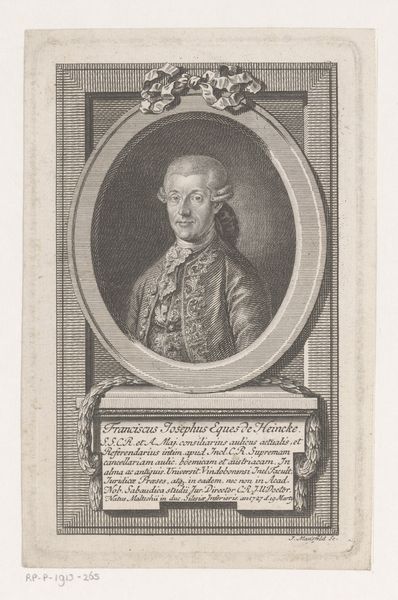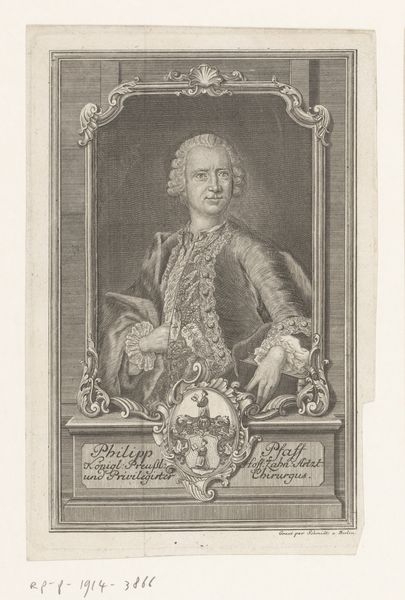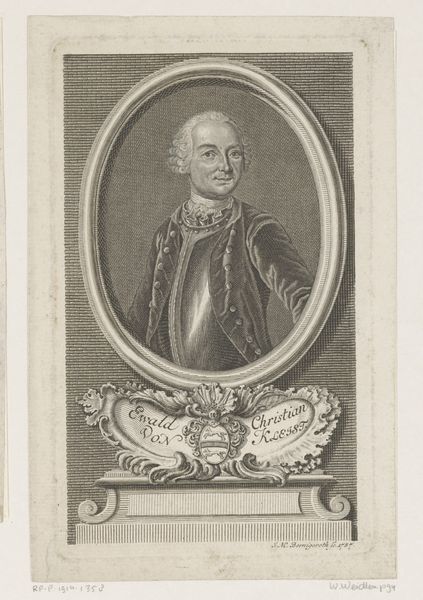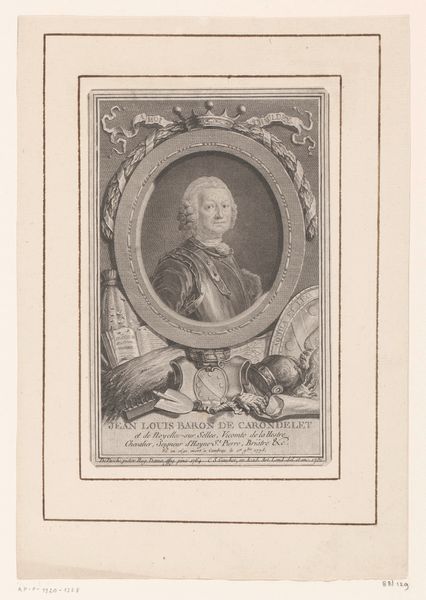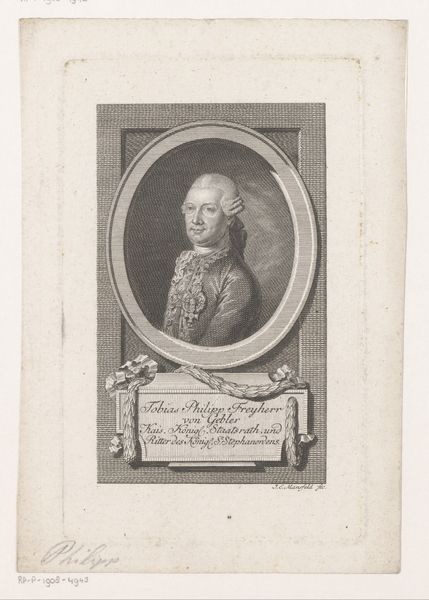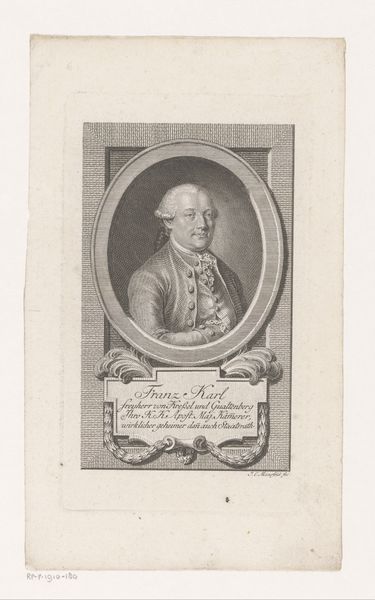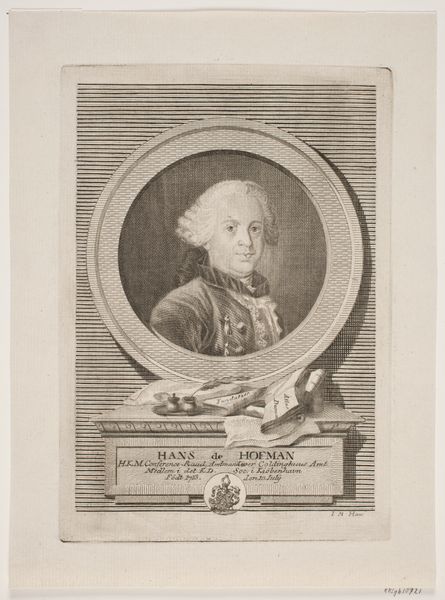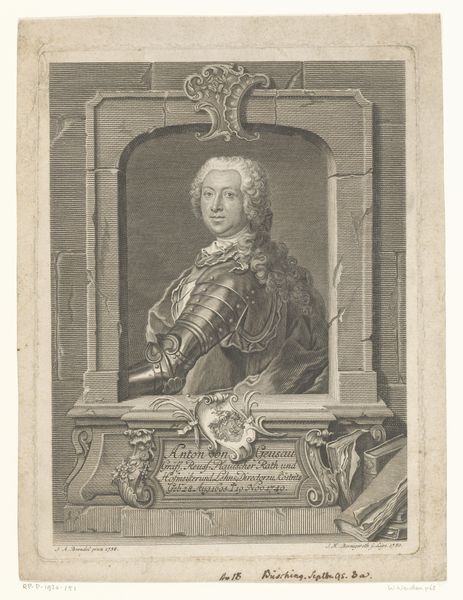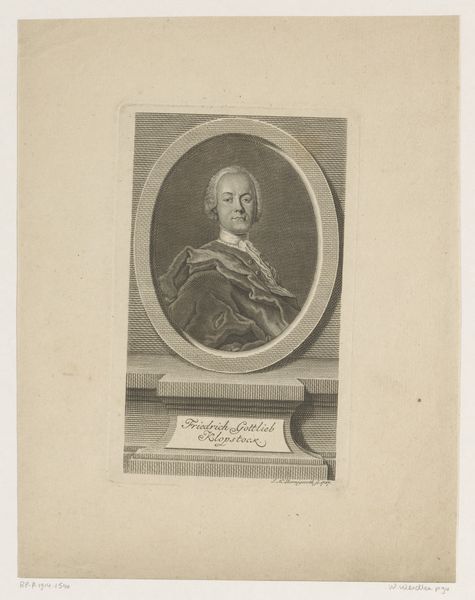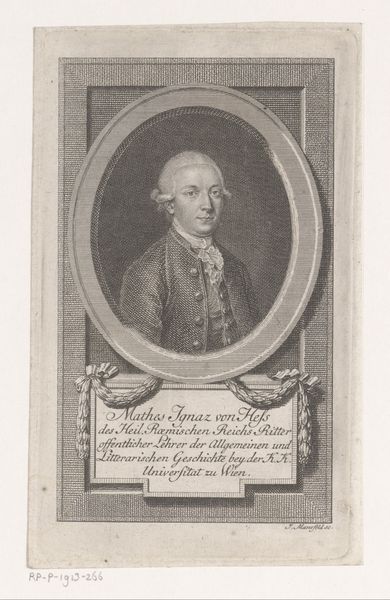
engraving
#
portrait
#
neoclacissism
#
old engraving style
#
form
#
19th century
#
line
#
academic-art
#
engraving
#
realism
Dimensions: height 305 mm, width 212 mm
Copyright: Rijks Museum: Open Domain
Carl Hermann Pfeiffer created this print of Johann Alexander, Knight of Brambilla, sometime around the turn of the 19th century. It’s an etching, a process that allowed for the relatively easy reproduction of images for mass distribution. Prints like these existed within a thriving market for portraiture at the time. Consider the public role of such images. They circulated in a society keenly attuned to status and hierarchy. Brambilla’s powdered wig, his elaborate coat, and the ornate frame surrounding him—all served to telegraph his social position. Even the Latin inscription at the bottom functions as a kind of social performance, demonstrating Brambilla’s erudition and connection to the world of learning. To truly understand the meaning of a work like this, we have to look beyond the image itself. Research into archives and social histories would help us understand the significance of Brambilla's title, his position within society, and the cultural values that shaped the production and reception of this portrait.
Comments
No comments
Be the first to comment and join the conversation on the ultimate creative platform.
